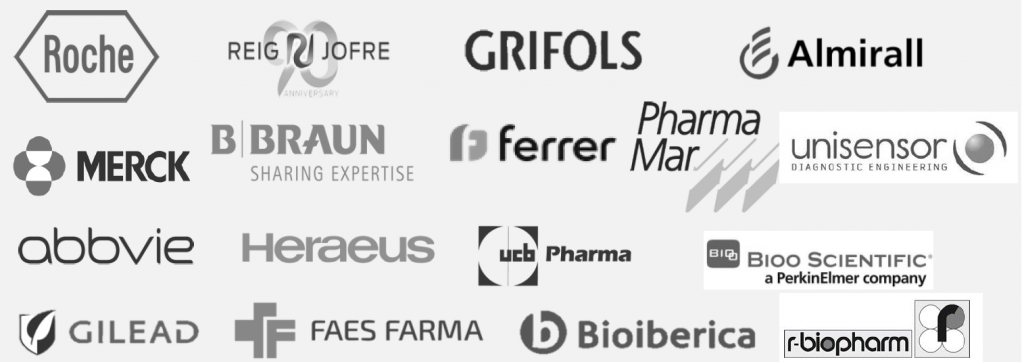Ibima: At the Forefront of Research with a Unique New Infrastructure in Andalusia
Ibima-plataforma BIONAND has inaugurated an innovative radioactive facility that will advance new diagnosis and treatments through the development of radiopharmaceuticals.
Malaga, December 2024. Málaga reaffirms its position as a leader in scientific innovation with the opening of a new radioactive facility, unique in Andalusia. This cutting-edge space, owned by the University of Málaga, is located within the Málaga Biomedical Research Institute and Nanomedicine Platform (Ibima BIONAND Platform), which is integrated into our Unit 28. It will facilitate the development of new drugs and therapies for treating various diseases, including cancer.
Moreover, due to its exceptional features and potential, this new facility has been included in the Ministry of Science, Innovation, and Universities’ map of Singular Scientific and Technical Infrastructures (ICTS). This designation highlights spaces distinguished for their excellence in equipment and services.
As noted by the Ministry, ICTS are “unique or exceptional in their kind.” Their high investment, maintenance, and operational costs, combined with their strategic importance, justify their availability to the entire national and international scientific community. NANBIOSIS also has this type of designation.
“Today, we inaugurate something very specific, very powerful, and very innovative.”
Dr. Francisco J. Tinahones
A Great Responsibility
“Today, we inaugurate something very specific, very powerful, and very innovative,” stated Francisco J. Tinahones, Scientific Director of Ibima, emphasizing the “great responsibility” that comes with being designated as an ICTS. “We have a task, and we all must undertake it to ensure that this structure is utilized to its full potential, enabling researchers from Málaga and beyond to use it and reap its benefits,” he insisted.

This new radioactive facility, approved on October 9 by the Nuclear Safety Council, has been integrated into the NanoImaging Unit of NANBIOSIS, and forms a cornertone within our own network of country-wide Units. “It belongs to a larger ICTS; it’s the third pillar,” clarified María Luisa García, Scientific Director of the ICTS node, explaining that its uniqueness is granted by the facility’s design and equipment.
“There is no other center like this in Andalusia; it’s the only one.”
Dr. Mónica Feijoo Cuaresma
A Gateway to New Therapies
“There is no other center like this in Andalusia; it’s the only one,” pointed out Mónica Feijoo Cuaresma, coordinator and supervisor of this new radioactive facility. She highlighted that this space will enable research contributing to the development of new radiopharmaceuticals for treating various diseases, such as cancer, neurodegenerative, cardiac, inflammatory diseases, obesity, allergies, or diabetes.

“There are different rooms and specialized equipment designed for the development of radiopharmaceuticals to monitor diseases, evaluate new early diagnostics, and create new therapies,” explained Dr. Feijoo. These radiopharmaceuticals, for instance, allow researchers to generate tumors, track their evolution, test new therapies, and determine their effectiveness. “A radiopharmaceutical is a drug to which you attach a radioactive isotope for visualization,” García added, summarizing that “radioactivity allows you to visualize and treat; it enables both diagnosis and therapy.”
“We work with animal models, specifically rats and mice.”
Dr. Mónica Feijoo Cuaresma
The facility, which required a €1.3 million investment, features a Radiopharmacy classified as a clean room, providing an environment free from contamination to manufacture new radiopharmaceuticals for preclinical research. “We work with animal models, specifically rats and mice,” noted Feijoo.
Facilities Highlights
The crown jewel of this facility is the multimodal molecular imaging room (PET/SPECT/CT), capable of acquiring images using both PET and SPECT radiopharmaceuticals as well as CT scans. “This trimodal equipment is extremely special because it is used in clinical settings, making it crucial for preclinical development of radiopharmaceuticals with a device that can later be transferred to patient care,” emphasized Feijoo.

“This trimodal equipment is extremely special because it is used in clinical settings, making it crucial for preclinical development of radiopharmaceuticals with a device that can later be transferred to patient care.”
Dr. Mónica Feijoo Cuaresma
The facility also includes an area dedicated to X-rays, equipped with an irradiator for generating immunodeficient animal models and for therapeutic applications, as well as an optical imaging system for in vivo fluorescence and bioluminescence, alongside 2D X-ray imaging. Completing the infrastructure are a radiochemistry lab and an area for managing radioactive waste in compliance with the Nuclear Safety Council’s regulations.
A Long and Challenging Path
Reaching this milestone has not been easy, as recalled by Juan Teodomiro López, Rector of UMA, during the inauguration ceremony. He expressed being “absolutely delighted” and emphasized that this new facility will enable research of “the highest caliber.”

In a similar vein, Sergio Cañete Hidalgo, Rector’s Delegate for Services Coordination and Inspection, underscored the importance of this facility, describing it as “not only unique in Andalusia but arguably in Spain.” He also praised the highly qualified and specialized team that will allow various research groups, both national and international, to elevate their work to a new level of excellence.
This article was written by Arancha Tejero for La Opinión de Málaga on December 18, 2024. Translated and edited by NANBIOSIS.
What is NANBIOSIS?
The goal of NANBIOSIS is to provide comprehensive and integrated advanced solutions for companies and research institutions in biomedical applications. All of this is done through a single-entry point, involving the design and production of biomaterials, nanomaterials, and their nanoconjugates. This includes their characterization from physical-chemical, functional, toxicological, and biological perspectives (preclinical validation).
In order to access our Cutting-Edge Biomedical Solutions with priority access, enter our Competitive Call here.
NANBIOSIS has worked with pharmaceutical companies of all sizes in the areas of drug delivery, biomaterials and regenerative medicine. Here are a few of them:











